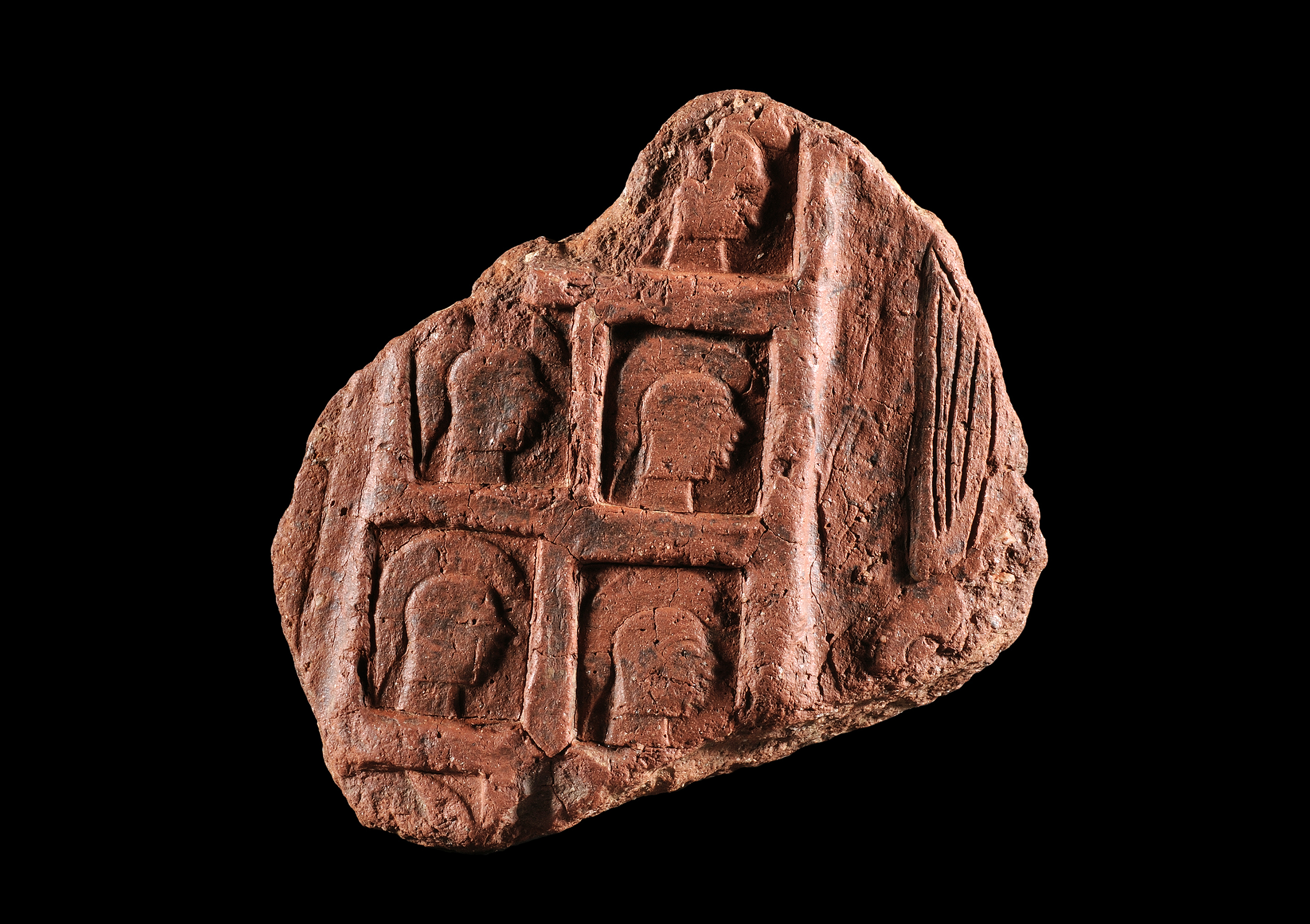

Fragment of a relief vase with a Homeric scene
The myth of the Trojan horse was one of the most influential in ancient Greece. Known from the Homeric epics, the story of a wooden horse, in whose belly Achaeans warriors were hidden, excited the imagination of people.
The earliest attempts to illustrating the myth were made by Cycladic potters (probably based on the island of Tenos) in the 7th c. BC. Their most famous work, a huge pithos from Mykonos, had its neck decorated with a relief representation of the wooden horse; the horse had 7 ‘windows’ on its body and neck, which allowed viewers to see the heads of the hidden warriors.
The small fragment of the Canellopoulos Museum (ca. 10×10.5 cm) comes from a similar pithos or an amphora (wall thickness 1.5-2.5 cm.). It is decorated in relief with 6 (or possible 8) frames, in which we can see the heads of helmeted warriors. To the right there is a vertical band leading to a small circle. The vase belongs to the same artistic tradition as the Mykonos pithos, and probably depicts the neck of the Trojan horse.
PUBLICATION
– Zarkadas Α. 2010. «Ομηρικά θέματα στο Μουσείο Κανελλοπούλου», in Μύθοι, κείμενα, εικόνες: ομηρικά έπη και αρχαία ελληνική τέχνη. Πρακτικά ΙΑ Διεθνούς Συνεδρίου για την Οδύσσεια, 95-120, esp. 107-115.
